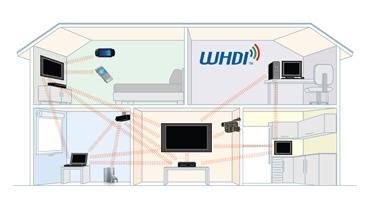Tech Trends '09: HDTV Unplugged

With the high-def disc war now firmly in its rearview mirror, the consumer electronics industry is girding for its next skirmish: the battle to see which of the various new wireless HDMI technologies will emerge as the de facto standard.
When HDMI broke out from the pack of new digital connections back in 2004, its ability to carry both digital audio and video signals on a single cable promised to rid homes of cable clutter caused by the various interconnects stretching between source components, receivers, and video displays. But with ultra-slim flat-panel TVs making an aesthetic statement as much as a technological one, apparently even a single cable is one too many. While companies have been playing with various wireless video technologies for half a decade, this past Consumer Electronics Show was jam-packed with announcements that products capable of wirelessly transmitting a high-def signal will be available starting this summer. Leading the charge are four technologies: Wireless Home Digital Interface (WHDI), WirelessHD (WiHD), Ultra-Wideband (UWB), and 802.11n.
The first wave of products will likely be add-on transmitters and receivers that can be plugged into source components and TVs, although some TVs might have embedded wireless chip sets later in the year. While no outright winners came out of CES, it appeared that the two newest approaches, WHDI and WiHD, had gained considerable momentum. (One clear sign of the current fluid state of wireless is that several leading companies, including LG, Samsung, and Sony, are members of several of the promotional groups formed around each of the four technologies.)
To be sure, all wireless technologies face challenges, ranging from cost to performance. To qualify as HDMI replacements, these technologies have to closely mimic the performance and reliability of wired connections despite working in a constantly changing environment. That means providing the consistent bandwidth and the transmission speeds required by high-def video, plus built-in error resiliency, low latency, and support for control protocols such as CEC (Consumer Electronics Control). Also, all have to include some form of Hollywood-approved copy protection, and many will have to conform to the interoperability requirements of various organizations, such as the Digital Living Network Alliance (DLNA), the High-definition Audio-video Network Alliance (HANA), and the Wi-Fi and WiMedia Alliances.
Here's a look at what each of the four wireless approaches promises to deliver.
WIRELESS HOME DIGITAL INTERFACE
Developed by the Israeli company Amimom, WHDI is backed by a special-interest group that currently includes Hitachi, LG, Motorola, Samsung, Sharp, and Sony. WHDI delivers uncompressed video - including 1080p/60 - throughout the home using the unlicensed 5-GHz band, with data rates as high as 3 Gbps (1080p) by way of a 40-MHz channel or 1.5 Gbps (720p and 1080i) at 20 MHz. WHDI supports the CEC protocol and High-bandwidth Digital Content Protection (HDCP) v. 2.0 technology used in wired HDMI. Because 5 GHz moves easily through walls, WHDI is regarded as a whole-house, rather than in-room, wireless technology (like other 5-GHz technologies, such as 802.11a and 802.11n Wi-Fi), with a range exceeding 100 feet. Spectrum-management technology helps to avoid potential conflicts with other devices sharing that band.




























































